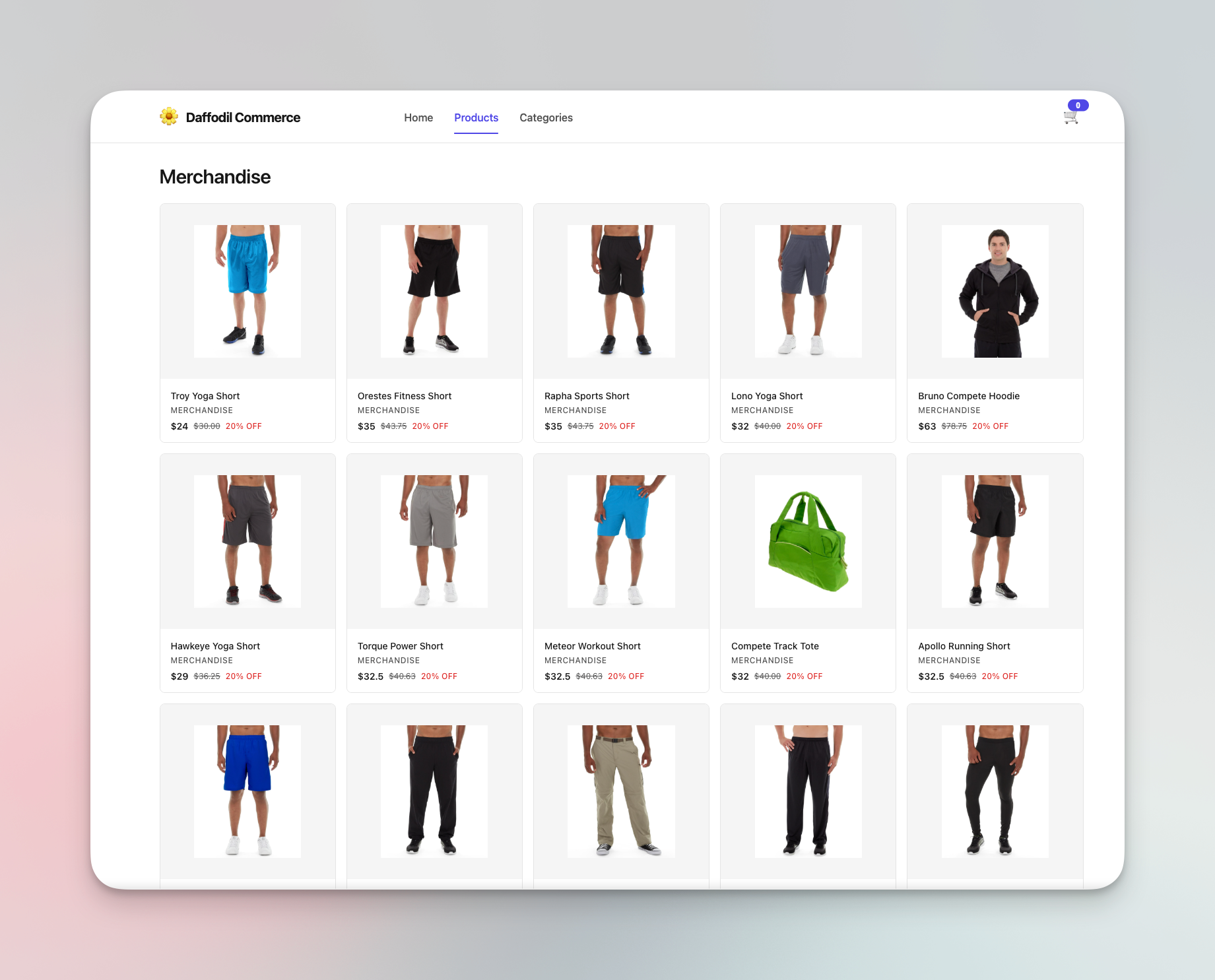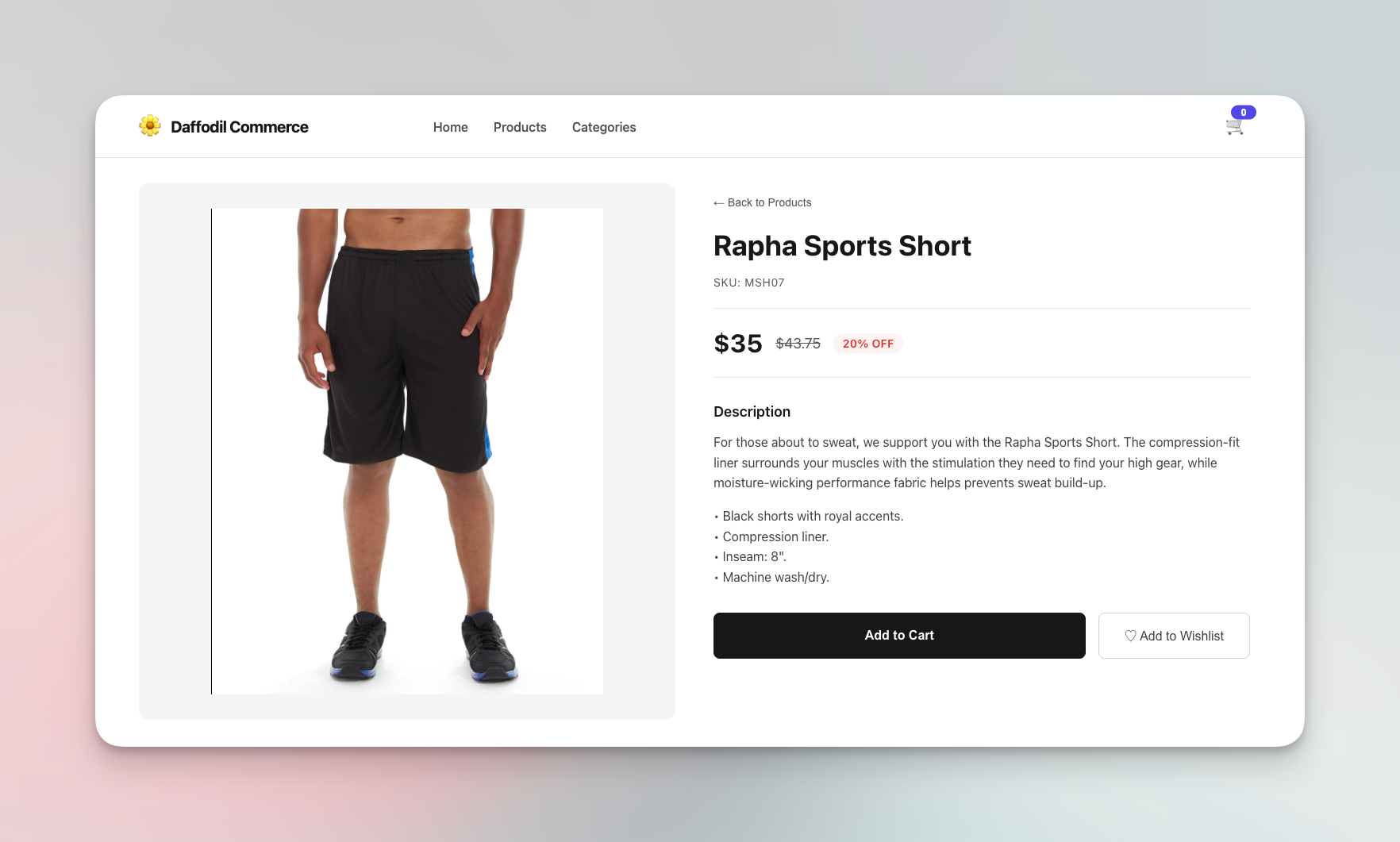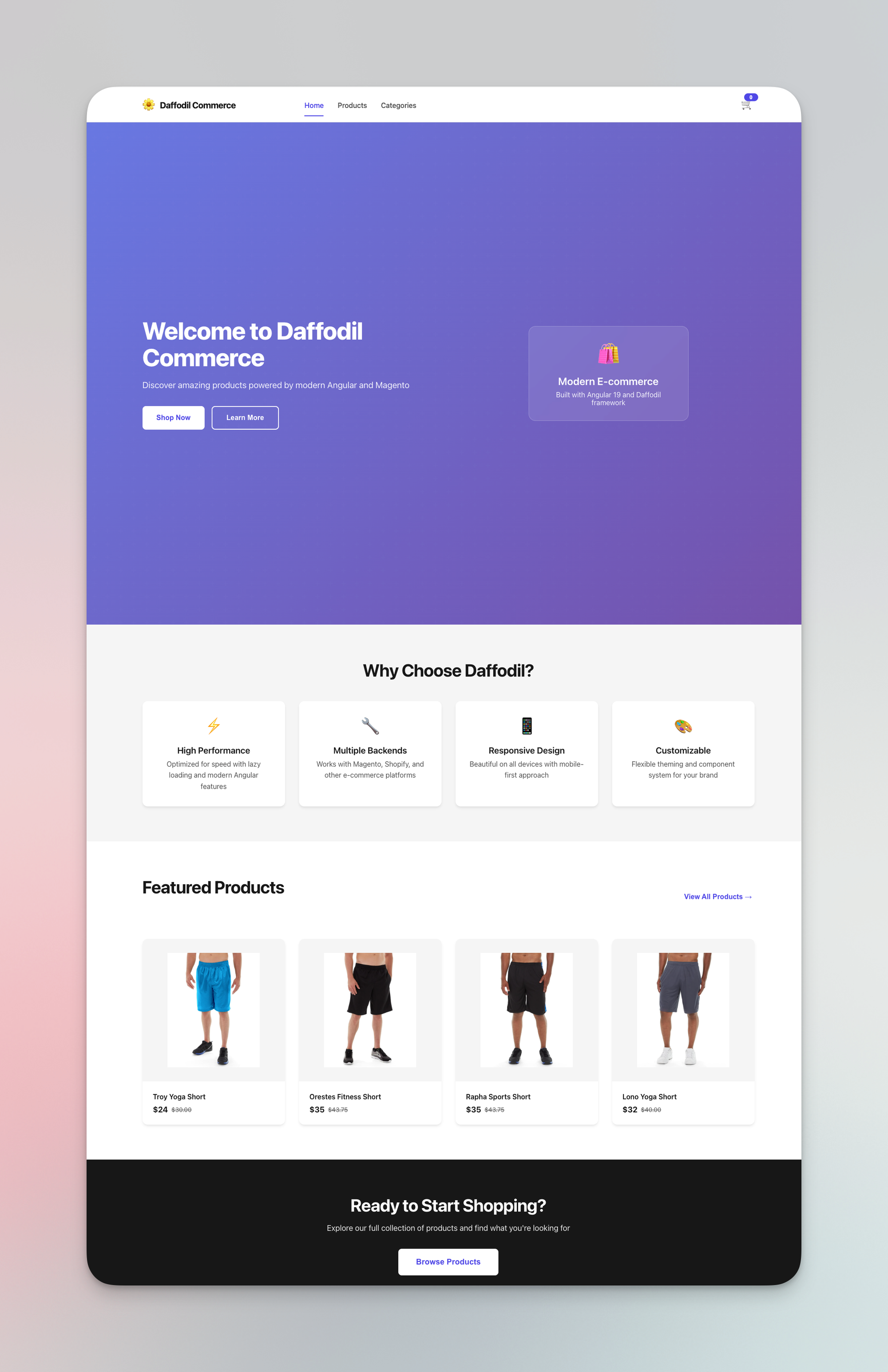Not Production-Ready, But Shockingly Complete: My First Hour with Daffodil.

The 60-Minute Storefront Challenge
“Set up a Magento 2 demo store with Daffodil and Angular 19.”
What started as a small experiment turned into a glimpse of what building eCommerce frontends could feel like in the future. In just about an hour, I went from an empty directory to a working storefront powered by Magento 2.4.7 and Daffodil.
Not production-ready — there’s much more to consider before shipping — but impressively complete for a first run.
Here’s what I had running after 60 minutes:
- ✅ Magento 2.4.7 backend with sample data (via Warden Docker setup)
- ✅ Angular 19 frontend wired up with Daffodil drivers
- ✅ Dynamic homepage with hero banners + featured products
- ✅ Product listing & detail pages pulling live Magento data
- ✅ Automatic navigation synced with Magento categories
- ✅ Responsive design out of the box
- ✅ Error handling and loading states
- ✅ GraphQL integration (via a small Daffodil Magento module to enable CORS)
- ✅ Standalone Angular components and RxJS powering the UI
Not bad for one hour. Usually, it takes weeks to get here.
Why Traditional Frontends Hurt
If you’ve spent time in Magento, Shopify, or Shopware, you know the grind:
- Weeks tweaking themes just to make them “fit.”
- Rigid templating systems like Twig or Liquid that limit creativity.
- Performance bottlenecks in bloated monoliths.
- UX roadblocks when trying to add modern patterns.
- Headless sprawl that devolves into a spaghetti mess of APIs, carts, and CMSs.
And then there’s vendor lock-in: switching platforms usually means a rewrite. Merchants rarely replatform — but would they, if the cost and time weren’t so high?
Hyvä vs. Daffodil: Apples and Bananas
Magento devs might ask: what about Hyvä?
Hyvä is a massive step forward for Magento theming: Tailwind, Alpine.js, better DX, and faster time-to-market. For merchants staying in Magento’s ecosystem, it’s the best possible theme today.
But it’s still a theme, tied tightly to Magento.
Daffodil isn’t a theme. It’s a frontend framework. It lives outside Magento (or Shopify, or Shopware), and it talks to platforms through drivers. Comparing Hyvä and Daffodil is apples to bananas: one is the best of Magento’s past, the other points to a different kind of future.
What Makes Daffodil Different
Daffodil has been quietly developed for 7 years by Damien Retzinger. It tackles eCommerce’s frontend pain points head-on:
- Universal Driver Pattern – I write against one interface; the driver adapts it to Magento, Shopify, GraphQL, REST, or mock data.
- Battle-Tested Modules – Carts, checkout, navigation, catalogs: prebuilt and ready.
- Angular 19 Ecosystem – TypeScript, reactive programming, standalone components, and CLI tooling.
- Frontend-First – I built the UX I wanted, then connected it to Magento with drivers.
That’s why the setup felt so smooth: Daffodil handled the complexity, while I focused on features.
Building the Demo
Step 1: Magento in Docker (10 minutes)
Warden made Magento setup fast. I spun up Magento 2.4.7 with sample data. One extra step: enabling GraphQL CORS with a small Daffodil module so Angular could talk to it.
Step 2: Angular + Daffodil Frontend (45 minutes)
Running ng add @daffodil/commerce scaffolded state management and drivers. From there:
- Navigation: A few lines pulled the Magento category tree with the Navigation Driver.
- Product Pages: Angular components consuming the Product Driver, complete with error/loading states.
- Homepage: Hero banners and featured products, styled with SCSS utilities and Angular Material.
No custom GraphQL queries. No hand-rolled cart logic. Just wiring up drivers and templates.

AI as My Pair Programmer
Here’s the kicker: I didn’t code it all manually. I used Claude Code, with MCPs like Sequential Thinking and Context7, and followed Anthropic’s prompt guide carefully.
- In Angular/TypeScript, AI excelled. Strong typing and conventions gave it a clear path.
- In Magento frontend (PHP/Knockout/RequireJS), AI struggles. Too complex, too brittle.
- In Magento backend tasks, AI is decent. But the frontend complexity is where it breaks down.
With Daffodil, the AI became a multiplier. I described features; it generated usable Angular code. This worked far better than asking it to build Magento templates.
That alone convinced me: frameworks like Daffodil are far more “AI-compatible” than traditional theming systems.
Why This Matters
Here’s what this experiment taught me:
- Frontend-first is liberating. I didn’t fight Magento’s theme system — I just built the UI I wanted.
- Platform-agnostic lowers lock-in. Replatforming might not always cost millions, but it’s still slow and expensive. Daffodil makes it easier to imagine switching.
- Modern DX matters. Angular 19 + Daffodil feels like building a modern web app, not patching a legacy theme.
- AI thrives on structured frameworks. With drivers, types, and conventions, AI actually builds useful features. Without them, it struggles.
A Promising Direction, Not a Finished Revolution
Is Daffodil ready for every production use case? Not yet. The ecosystem still needs time to grow, and adoption won’t happen overnight.
But in one hour, I built what normally takes weeks. That’s worth paying attention to.

Want to Try Daffodil?
Closing Thoughts
My 60-minute Daffodil test left me with two impressions:
- Daffodil is different. Not a theme, not a toy, but a framework that could reshape how we build eCommerce frontends.
- AI-driven development is closer than it seems. Writing boilerplate may soon be AI’s job; our role will shift to describing, instructing, and validating.
For now, I’m just excited that in an hour, I had a storefront that felt modern, fast, and flexible. Not perfect, not finished, but promising.
And honestly? It was fun.